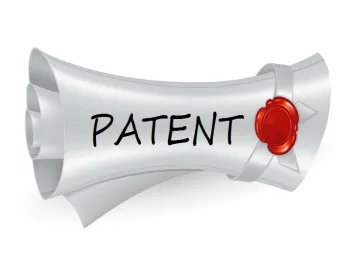Summary
On October 6, the Federal Trade Commission (FTC) released its report on patent assertion entity (PAE) activity. The report is the result of research that began in September 2014 to address a gap in the agency’s understanding of PAEs, how they operate and how policies can be developed to reduce nuisance litigation. The study focused on PAE practices, including acquisition, litigation and licensing. The FTC recommends that policymakers address asymmetries in PAE litigation through various procedural and substantive reforms.
In Depth
On October 6, the Federal Trade Commission (FTC) released its report on patent assertion entity (PAE) activity. The report is the result of research that began in September 2014 to address a gap in the agency’s understanding of PAEs, how they operate and how policies can be developed to reduce nuisance litigation. The study focused on PAE practices, including acquisition, litigation and licensing. The FTC recommends that policymakers address asymmetries in PAE litigation through various procedural and substantive reforms, discussed further below.
Background
The FTC undertook its research after a public workshop in December 2012 garnered a number of public comments noting a lack of empirical data on PAE activity. The FTC used its Section 6(b) authority to compel disclosures of information about organizations, their conduct, practices and relations to other corporations, partnerships or individuals. This resulted in the agency’s compilation of detailed information about PAE business practices that would not otherwise be publicly available. Specifically, the study examined transactions in the intellectual property marketplace and was a significant undertaking. The FTC estimated that the patents examined in the study represent more than 75 percent of United States patents held by all PAEs as of the end of 2013, and the agency examined at least 8.8 percent of all patent suits filed in the United States during the study’s duration.
Findings
The agency began its analysis of PAEs by sorting them into two types, which it named Portfolio PAEs and Litigation PAEs. Portfolio PAEs are highly capitalized and hold large patent portfolios containing up to thousands of patents. Those in the study typically negotiated licenses by sending demand letters, and if litigation was pursued—though this occurred only 0.9 percent of the time—it often took more than two years to settle. Conversely, Litigation PAEs operate with little working capital and hold small portfolios, often containing 10 patents or less. Litigation PAEs generally choose to sue potential licensees at the outset, with two thirds of those cases settling swiftly within one year.
Furthermore, while 65 percent of Portfolio PAEs’ royalty licenses were negotiated to be greater than $1 million—with 10 percent greater than $50 million—77 percent of suits by Litigation PAEs generated license royalties with a value of less than $300,000. A recent estimate by the American Intellectual Property Law Association determined that defending a non-practicing entity’s (NPE) patent lawsuit costs between $300,000 and $2.5 million through the end of discovery. Therefore the report concludes that 77 percent of Litigation PAE settlements fell below certain benchmarks used to determine whether a lawsuit constitutes nuisance litigation. Even though Litigation PAEs produced lower revenues, they accounted for the vast majority of the lawsuits filed in the study.
The report seeks to address the conduct of Litigation PAEs through various patent litigation reforms. Non-practicing PAEs have a number of advantages in these intellectual property suits. Since these entities do not manufacture or develop technologies, they have very low discovery costs in litigation. They are also immune to countersuit as they have no way of infringing patents themselves, and may have no reputational concerns. Additionally, Litigation PAEs use sub-entities that the study called “affiliates” that hold only a few patents each and file suits as members of often complicated and opaque organizational structures that do not require reporting. Therefore, one company could be sued on the same technology by two entities from the same parent PAE.
The report recognizes the potential harms of this patent assertion activity. First, companies may face disproportionate litigation and licensing costs that do not reflect the true value of the patented technology. Companies may choose to settle to avoid the cost of litigation, regardless of the strength of their defense. Second, startups and small firms can be disproportionately affected, which may hinder entrepreneurship. Finally, research efforts and the development of new products may be hindered as well by the diversion of talent and resources to litigation.
Recommendations
The report highlights four reform efforts that would start to balance these asymmetries in PAE litigation. First, the report recommends reducing the imbalance in costs by reforming Federal Rule of Civil Procedure 26 to require early disclosures of asserted claims and limit discovery prior to preliminary motions. Second, the FTC recommends amending Federal Rule of Civil Procedure 7.1, which involves the reporting of relationships, to require more PAE affiliates to be reportable at the start of litigation, which would make relationships more transparent. Third, the FTC aims to tackle simultaneous suits, which are costly to both the courts and private actors. The agency recommends the development of procedures that would encourage courts to stay suits against end-users until the conclusion of the suit against that product’s manufacturer. Fourth, the FTC acknowledges the need for sufficient notice in patent infringement complaints. This issue was addressed in part in a December 2015 amendment to the Federal Rules of Civil Procedure requiring patent holders to plead “plausible” factual allegations, which requires more particularity than before.
Practical Impact
Though most of the report’s recommendations are at a policy level, rather than enforcement, this report, along with the FTC’s November 2014 enforcement action against a PAE for its use of deceptive claims and false legal threats in thousands of demand letters sent to businesses, makes clear that the FTC is concerned about patent litigation involving PAEs and is looking at ways to address it.
Ashley McMahon also contributed to this newsletter.



 />i
/>i

